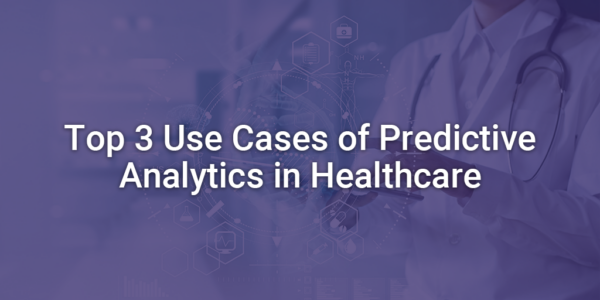
Predictive analytics is a rapidly growing field in healthcare that utilizes data, statistics, and machine learning to identify patterns and predict future outcomes. By analyzing patient data, healthcare providers can improve patient outcomes and reduce costs. In this article, we will explore some examples of predictive analytics in healthcare.
Introduction
Predictive analytics is transforming healthcare by improving patient outcomes, reducing costs, and increasing efficiency. Predictive analytics is the use of data, statistical algorithms, and machine learning techniques to identify the likelihood of future outcomes based on historical data. In healthcare, predictive analytics can be used to improve patient outcomes by identifying high-risk patients, predicting disease progression, and optimizing treatment plans.
Example 1: Predicting Hospital Readmissions
One of the most common uses of predictive analytics in healthcare is predicting hospital readmissions. Hospital readmissions are not only costly for healthcare providers but also detrimental to patient health. A study conducted by the New England Journal of Medicine found that one in five Medicare patients were readmitted to the hospital within 30 days of discharge. Predictive analytics can help reduce hospital readmissions by identifying high-risk patients and providing targeted interventions.
Example 2: Early Detection of Sepsis
Sepsis is a life-threatening condition that is difficult to diagnose early. However, early detection of sepsis is critical for improving patient outcomes. Predictive analytics can help identify patients at risk of sepsis by analyzing vital signs, lab results, and other patient data. By detecting sepsis early, healthcare providers can provide timely interventions and improve patient outcomes.
Example 3: Predicting Disease Progression
Predictive analytics can also be used to predict disease progression. By analyzing patient data, healthcare providers can identify patients who are at high risk of disease progression and provide targeted interventions. For example, in cancer care, predictive analytics can be used to predict tumor growth and design personalized treatment plans.
Example 4: Optimizing Treatment Plans
Predictive analytics can also be used to optimize treatment plans. By analyzing patient data, healthcare providers can identify the most effective treatments for individual patients. For example, in mental health care, predictive analytics can be used to identify the most effective medications for individual patients based on their genetic makeup.
Conclusion
Predictive analytics is transforming healthcare by improving patient outcomes and reducing costs. By analyzing patient data, healthcare providers can identify high-risk patients, predict disease progression, and optimize treatment plans. Predictive analytics is a rapidly growing field in healthcare and has the potential to revolutionize the way healthcare is delivered.
Email- contact@devopsschool.com

 Starting: 1st of Every Month
Starting: 1st of Every Month  +91 8409492687
+91 8409492687  Contact@DevOpsSchool.com
Contact@DevOpsSchool.com
